Have you ever been walking down a street, or even in your own neighborhood, and suddenly been startled by an intimidating bark? It can be scary when you encounter an unknown dog that seems provoked, especially if it’s one of the larger breeds.
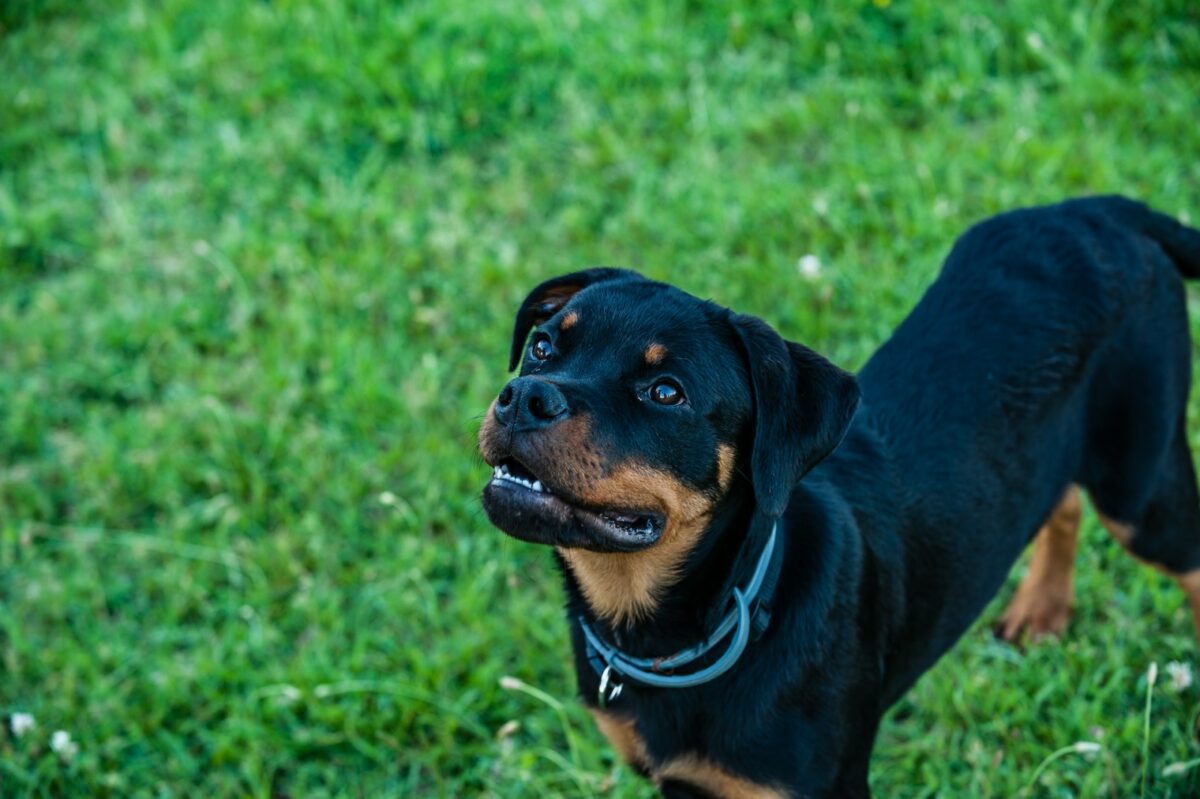
The truth is dogs are social animals with an innate ability to pick up on emotions. If they sense fear from humans, they may become defensive and bark or growl as a warning sign.
Additionally, some dogs may be more vocal than others due to their breed or individual personalities. For many people, dogs are the sweetest of pets. From their loyal companionship to their slobbery kisses, they bring joy into our lives in countless ways.
If you’ve ever experienced this nervous feeling when looking at a dog, rest assured that you’re not alone — some breeds have been bred with these qualities to make them better protectors.
An Introduction To Scary Dogs
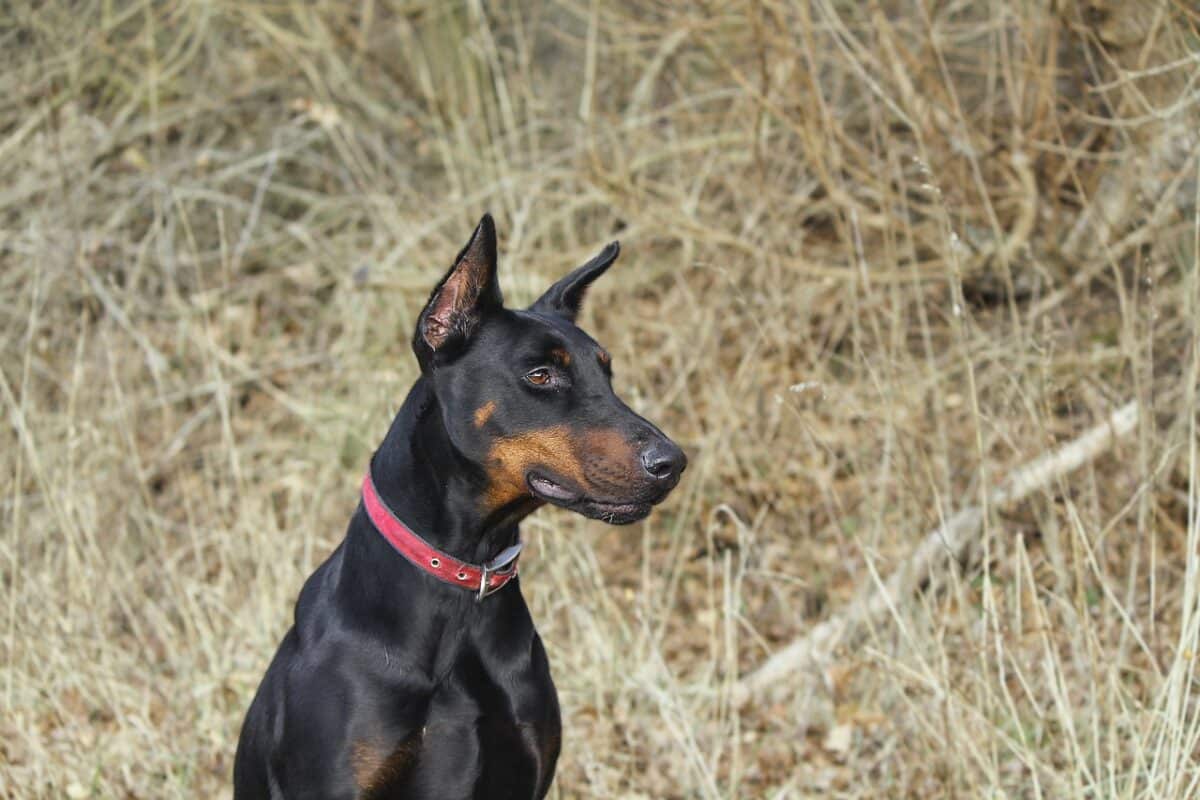
A scary dog can threaten your safety, especially when you may not know what breed it is or its aggression level. While scary dogs can differ in size, breed, gender, and other attributes, they all share one common aspect – fear.
People naturally fear unfamiliar animals, especially when they display aggressive behavior like growling or baring their teeth. It is best practice to observe scary dogs from a safe distance and avoid any contact as they may become defensive and attack without warning.
What Makes a Dog Scary?
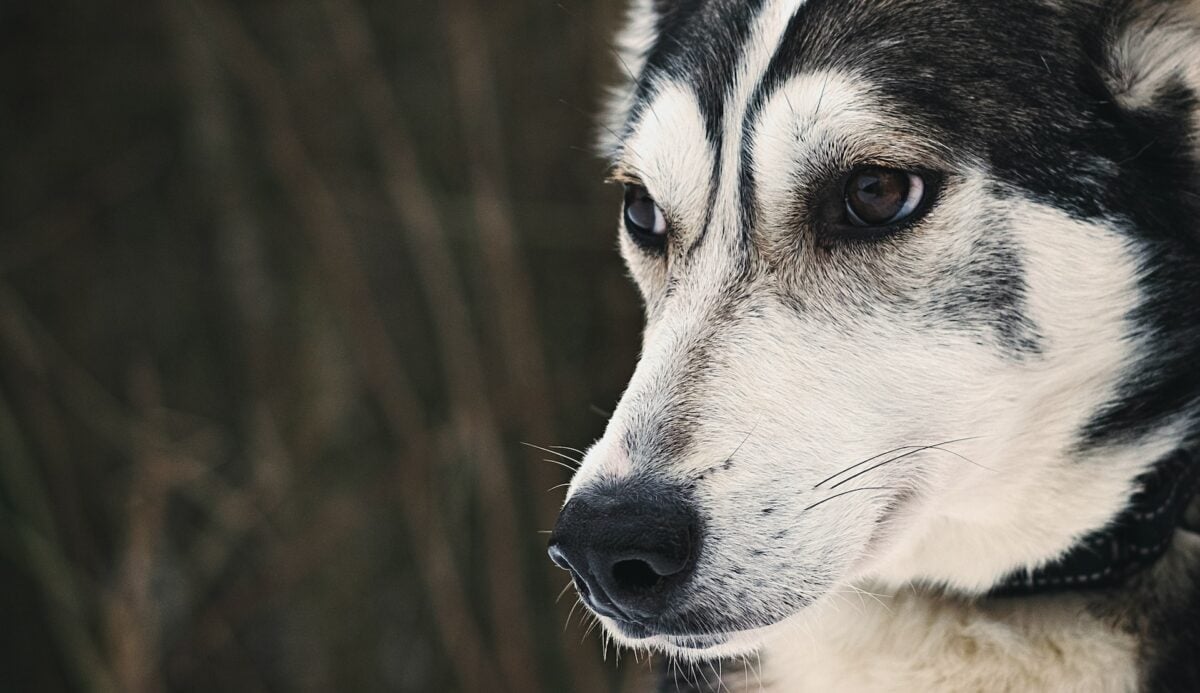
A scary dog can vary depending on several factors, including size, breed, and temperament. Generally speaking, larger-sized dogs tend to be perceived as scary more quickly due to their imposing size and strength. However, certain breeds of dogs—like Pit Bulls, Rottweilers, German Shepherds, or Doberman Pinschers—tend to inspire fear even when they are small pups due to their reputation.
Furthermore, a scary dog’s demeanor is key; aggressive behavior or an aversion to strangers can result in anxiety for all involved. Dog owners should take special care when training their pets to interact with people to minimize the chances of a threatening situation arising from an overly zealous or angry pup.
Consequently, owners and passersby need to understand the behaviors that make a scary dog so disconcerting so that everyone remains safe and secure.
The Most “Scary” Dogs and Why
While all dogs are deemed “man’s best friend,” some breeds are often associated with characteristics that may make them appear “scary.” These breeds include Doberman Pinschers, Rottweilers, Akitas, and Pitbulls.
Although these breeds have received a bad reputation in the past due to their intimidating appearance and size, it isn’t the breed that determines their temperament. It all comes down to how you raise and socialize them. Please note that regardless of breed, socialization with humans from early puppyhood is essential for any dog as this helps to ensure they will grow up to be friendly rather than aggressive dogs.
Here’s some more information on breeds of dogs that people often deem scary:
#1 Pit Bulls
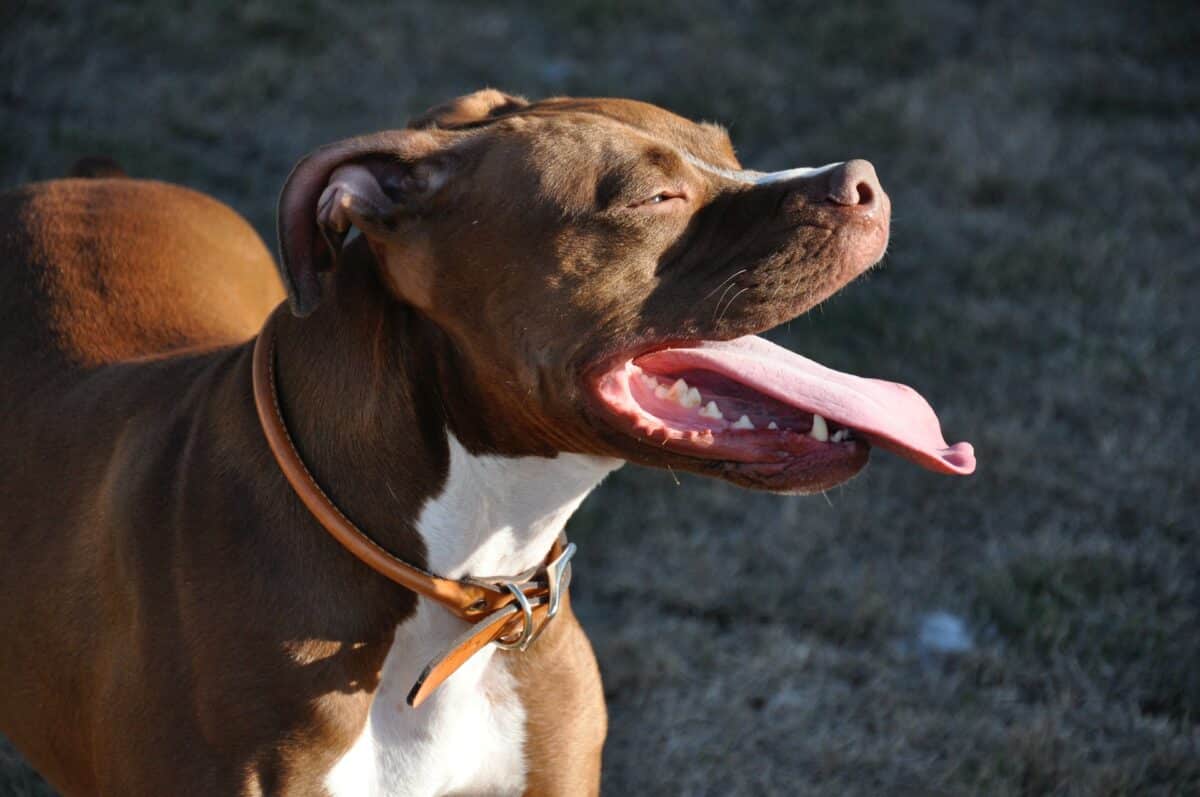
Breeding of Pit Bulls began in England for bull and bear baiting, an immensely popular pastime until these activities became illegal in the 19th century. They are often judged as scary dogs because of their size. While they can vary between sizes, the typical Pitbull is usually quite large and muscular.
The average height of an adult Pitbull ranges from 18 – 22 inches, and its body weight (typically consisting mostly of muscles) can range from 30 to more than 70 pounds. All these factors combined with short, close-lying fur in various colors to create a formidable-looking canine.
Get more information about Pit Bulls here.
#2 Rottweilers
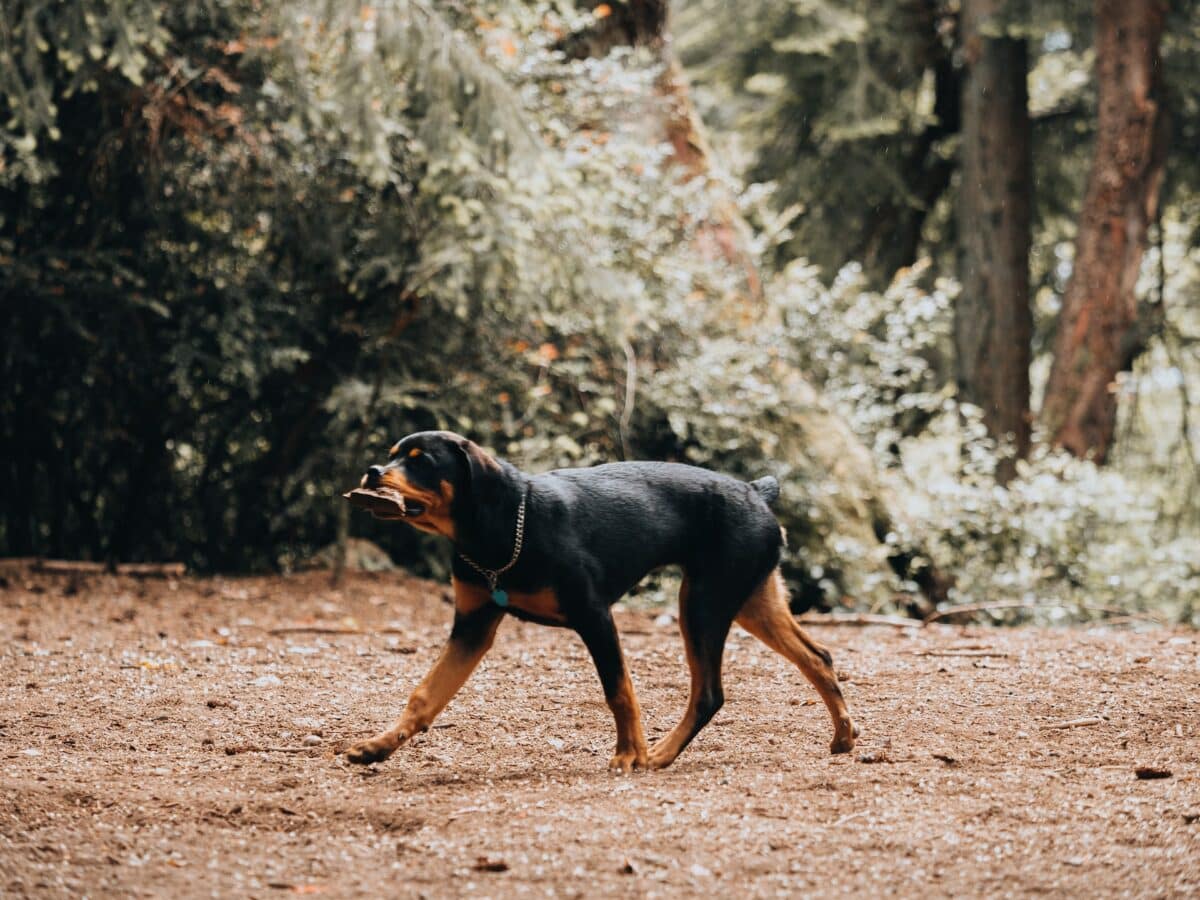
The Rottweiler breed has its roots in Germany and where it acted as a herding and guard dog on farms. People often find Rottweilers scary-looking dogs with well-muscled bodies and intimidatingly dark brown eyes. They boast broad heads with impressive teeth, which can give off a daunting impression.
They tend to reach a height between 22 – 27 inches at the withers and weigh between 77 – 130 pounds when fully grown. While they can be intimidating at first glance, many people find them gentle giants when properly trained and socialized.
#3 German Shepherds
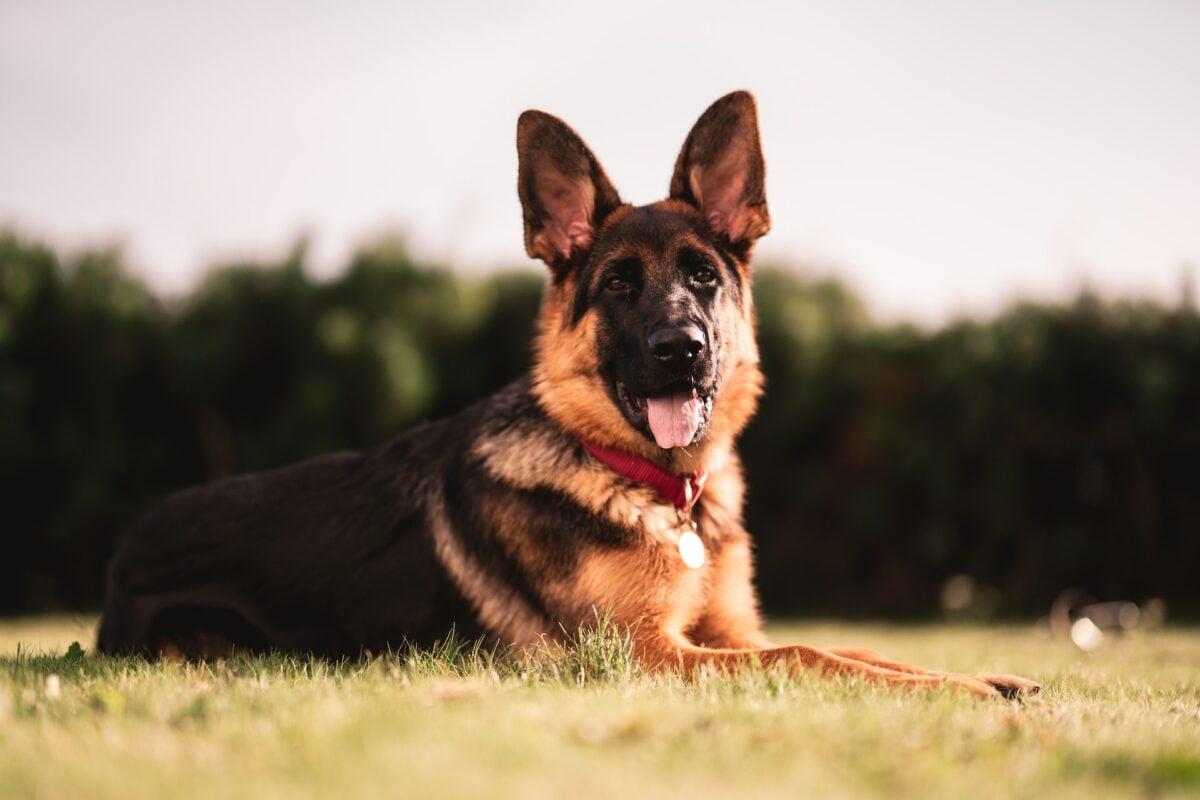
German Shepherds have historically been hailed as scary dogs, but are nothing of the sort. Originally bred in Germany for herding sheep, this regal breed has become a beloved pet worldwide due to its intelligence and loyalty.
They range from 22-26 inches tall at the withers and 50-90 pounds in weight, both males and females weighing around the same amount. The coat is double layered with an outer guard layer made up of straight fur and an inner wooly undercoat keeping it warm in cold weather. Though traditionally black and tan, they can come in various colors, including sable and white.
#4 Doberman Pinschers
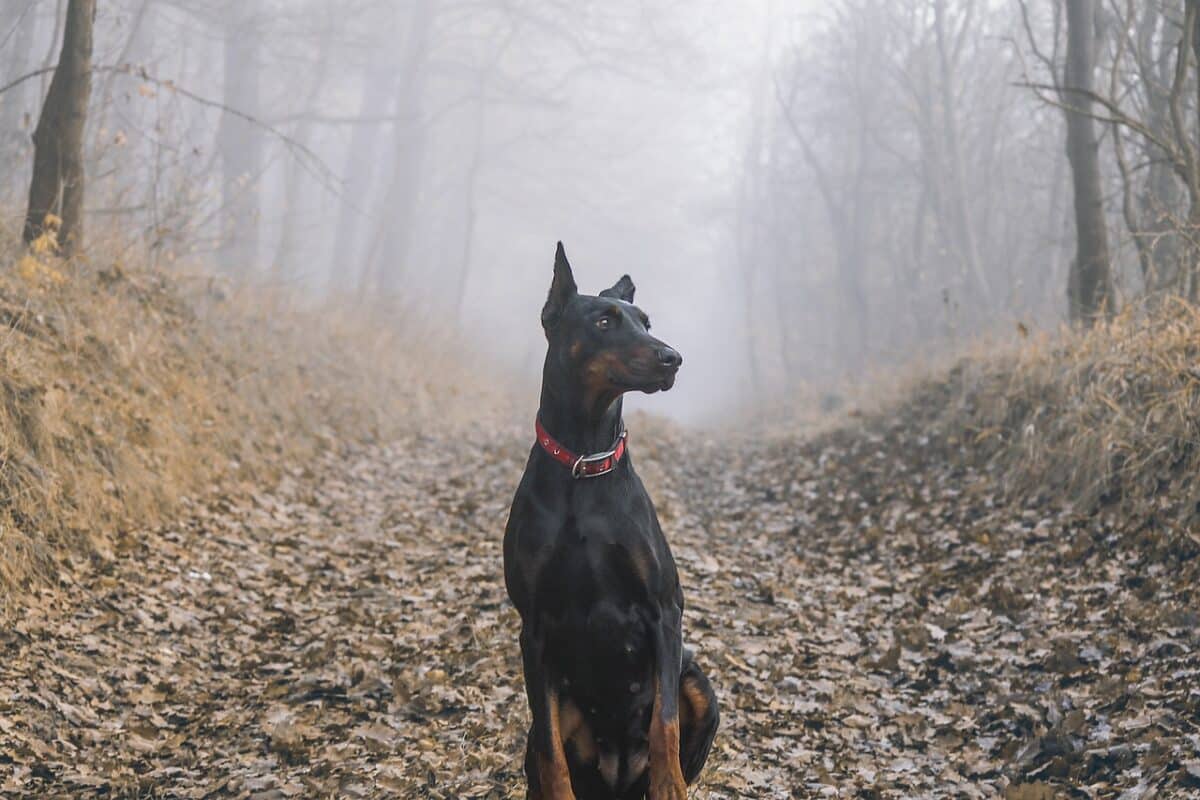
Doberman Pinschers, more commonly known as just “Dobes,” are a breed of scary dog originally developed by a German tax collector in the 1890s who wanted a strong guard dog.
These medium-sized dogs have short hair, range from 24 to 28 inches tall and weigh around 60 to 90 pounds. Other than their dark and often short-trimmed coat, their upright ears and curved tail make them easily identifiable.
While traditionally scary – mainly credited to their intimidating appearance – Dobes can be surprisingly friendly and loyal once properly socialized. They make great family dogs but always require routine exercise, mental challenges, and plenty of love!
#5 Chow Chows
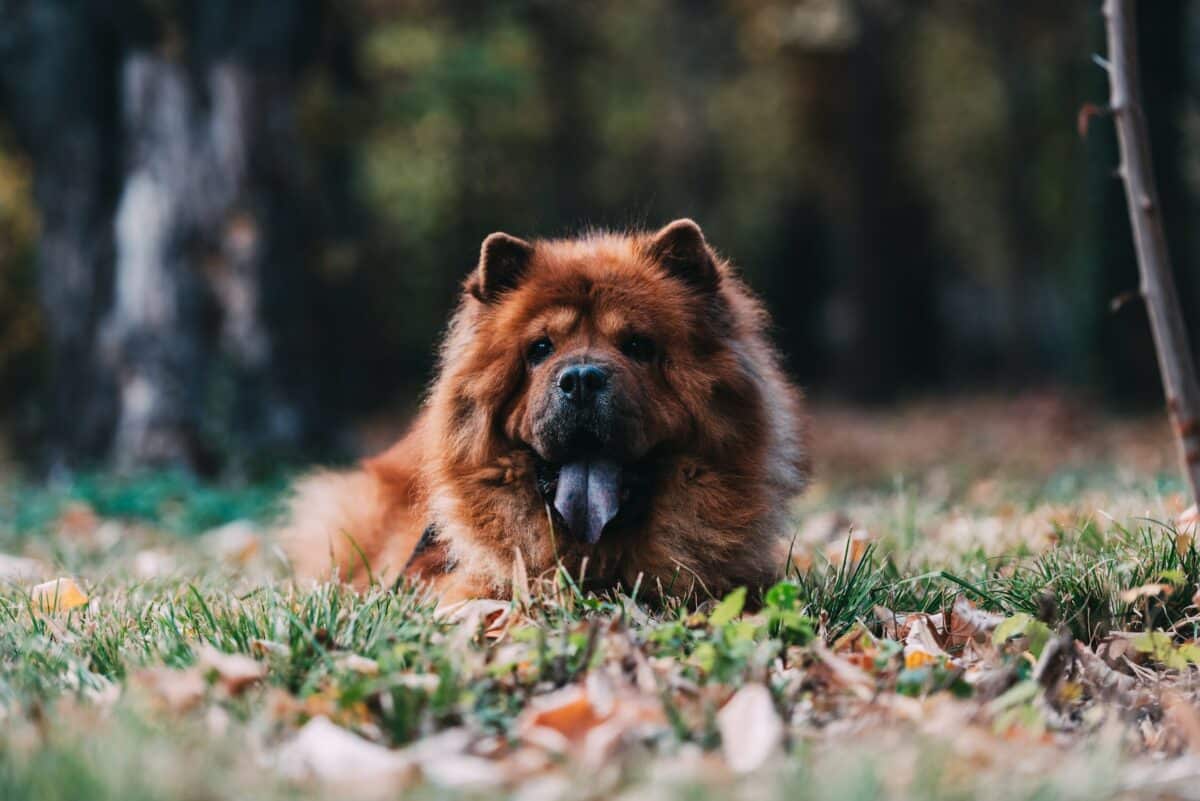
Chow Chows have been around for centuries, having roots in China. They were originally bred as working dogs and used to pull carts or guard camps and compounds. Nowadays, people keep these fluffy furballs mostly as pets due to their fiercely loyal personalities.
But take note; Chow Chows can look scary despite their cuddly size! They usually have a dense double coat of fur ranging from red, black, blue, and cream, arguably making them look more imposing.
Large round heads with dark eyes set back into small ears give Chow Chows an air of ferocity. Although generally docile, they are impolite with strangers. On average, Chow Chows grow up to 18 inches tall and weigh between 40-70 pounds.
#6 Siberian Huskies
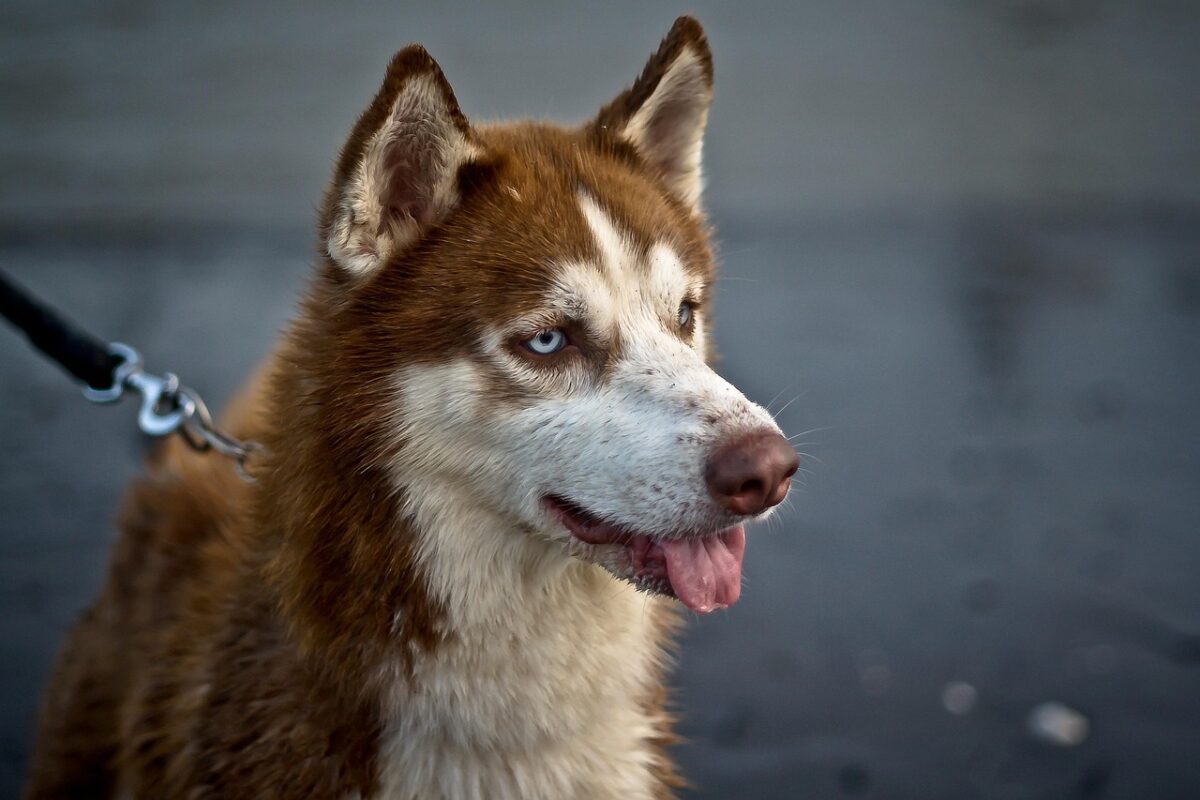
Siberian Huskies sometimes receive the label “scary,” perhaps because they are reminiscent of wolves. But appearances can be deceiving because they are in fact very playful and loyal dogs. The breed originates from the cold climates of Siberia and North-Eastern Russia, where they were bred to help herd reindeer and pull sleds through snow.
They range in size between 20 to 24 inches tall, weighing 45 to 60 pounds. Their stunning coats contain a range of colors and patterns, such as white, black, copper-red, or gray. They often have blue or brown eyes, although there are many examples of Huskies with bi-eyed color combinations. Altogether, Siberian Huskies make for striking family pets due to their resilient nature and good looks.
Description of Their General Appearance and Personality
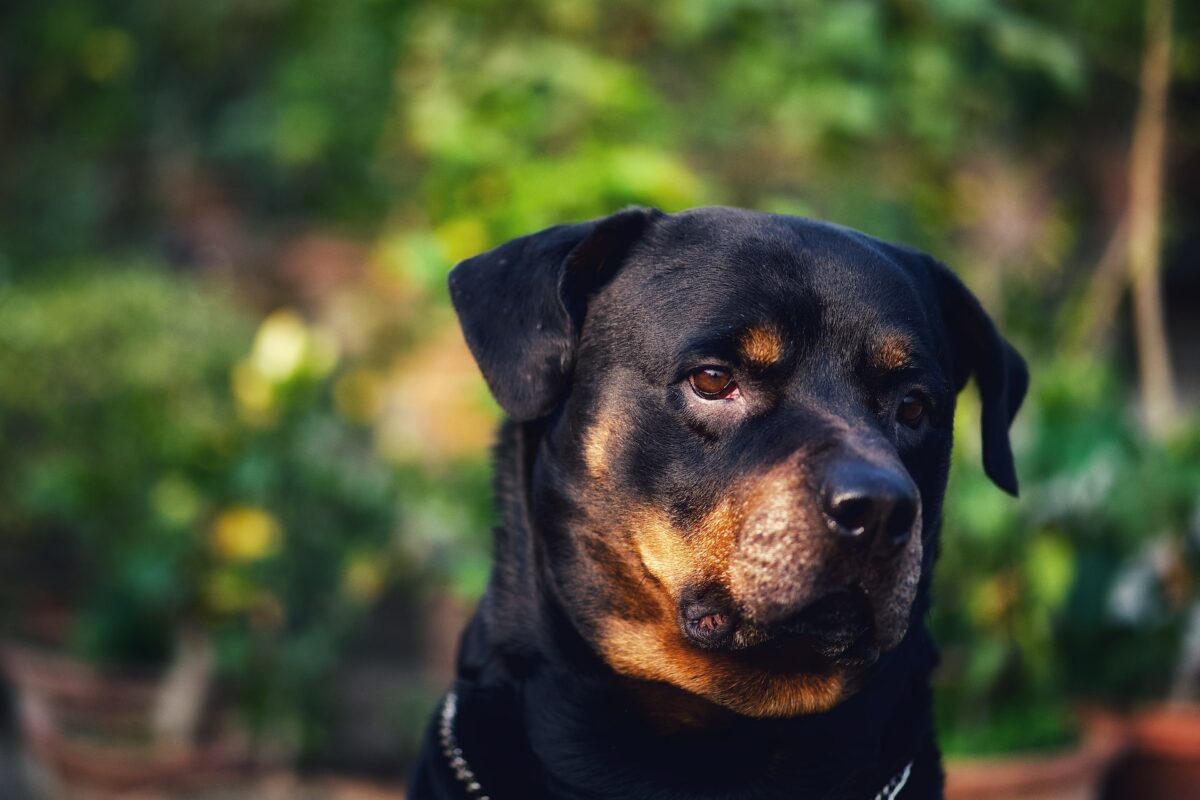
Scary dogs can be intimidating, especially when they are of a larger breed. Many of these breeds have been bred to develop more protective traits and characteristics that make them more suited as guardians of homes and people. They often have a powerful, muscular physique with a broad chest, thick neck, and square muzzle.
They also tend to have an intense stare and alert expression, making them appear menacing or threatening. Their fur may sometimes stand up on end to further enhance this effect.
Regarding personality traits, scary dogs usually display strong territorial instincts and protection-oriented behavior toward their owners. These pups may react when strangers enter their territory. Some dogs may bark loudly and show signs of aggression, such as snarling or growling.
Others will stand their ground with a no-nonsense attitude when confronted by an intruder or someone unfamiliar. They are also known to be loyal companions who value their family’s safety above all else — which is exactly what makes them so effective as protectors!
Apart from the physical aspects and protective instincts associated with scary dogs, some other behavioral qualities set them apart from other canines: they are often independent thinkers who prefer to do things on their own without guidance; they generally require consistent training to reach peak performance.
Lastly, they have a tendency to bond with just one particular person rather than an entire family unit — making it important for the owner’s companionship needs to be met for the dog to remain content.
Scary dogs can be intimidating creatures, but with proper training and care, these loyal companions make excellent protectors for homeowners everywhere!
Why Are These Dogs Considered Scary?
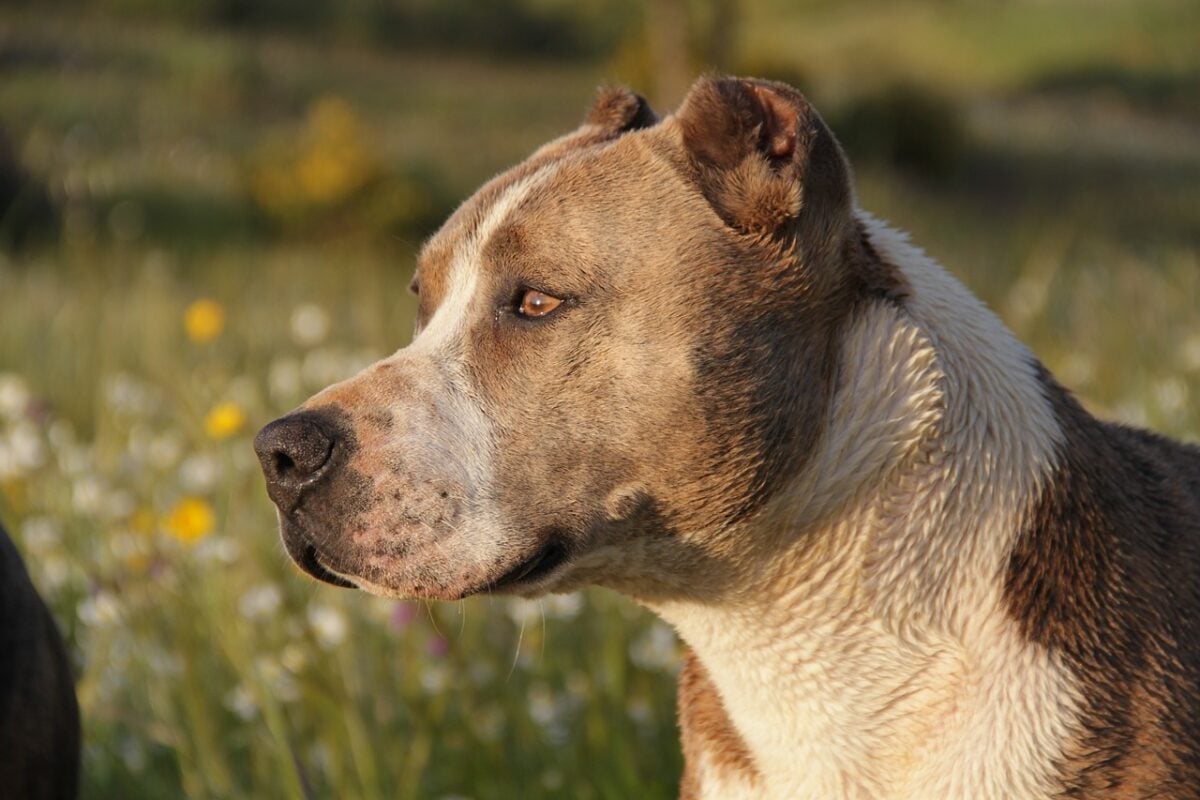
Many people find scary dogs intimidating due to their size and strong presence. It is especially true of breeds such as Rottweilers, Pit Bulls, German Shepherds, and Dobermans. These dogs are generally bigger than more common breeds like Labradors and Golden Retrievers.
Furthermore, they are often trained to be a guard or working dogs and can have a much more aggressive disposition than other breeds. Much of our fear also stems from how these breeds are portrayed in media and popular culture – more often than not, they feature as dangerous guard dogs. It contributes to why these dogs can feel scary or intimidating for those who are not used to them.
What To Do If You Encounter a Potentially Dangerous Dog
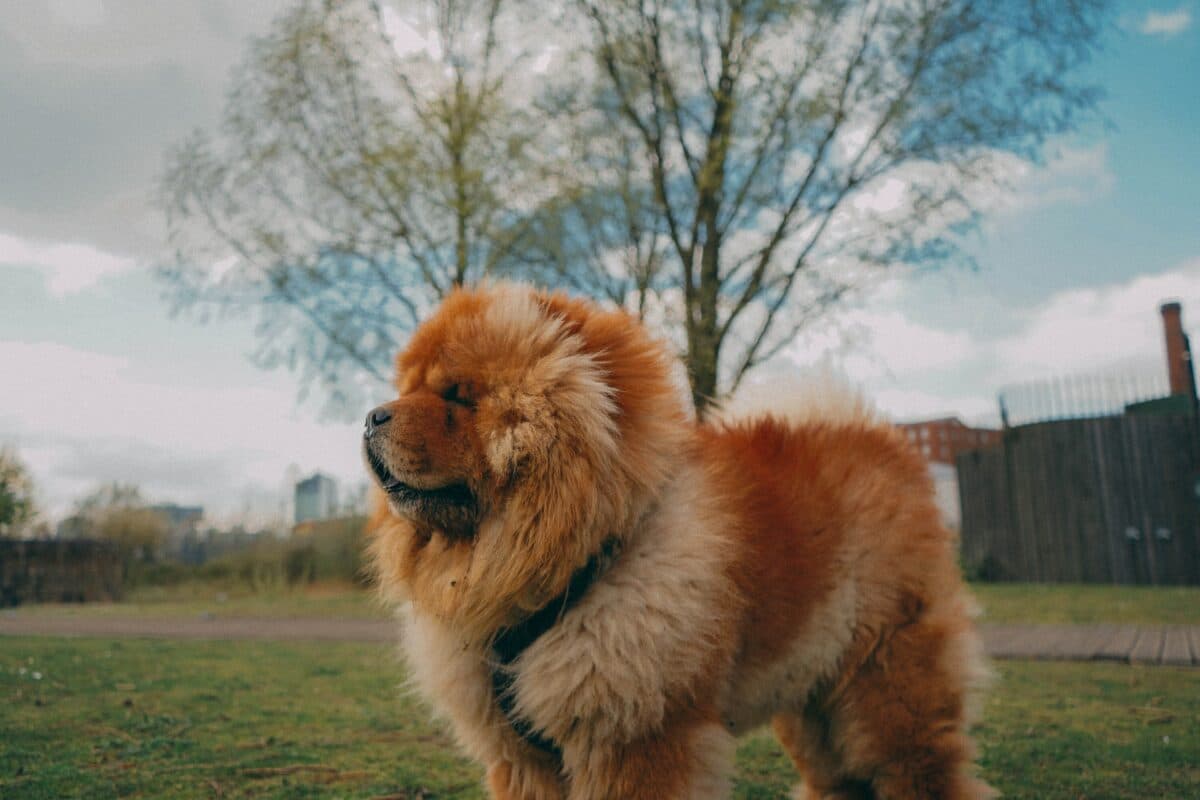
If you ever encounter an unknown, potentially dangerous dog, it’s important to stay calm and use your best judgment. First, don’t stare the dog in the eyes or move too quickly (this can be interpreted as a challenge.) Instead, slowly back away and don’t make any sudden movements.
Try to identify the owner and ask them to control their dog if they’re nearby. If there is no owner present and you are feeling threatened, then you should use a stern voice to call out commands like “No,” “Sit,” or “Stay.”
If none of these tactics work, leave the area while staying alert. Most importantly, always remember that it is unsafe to approach an unfamiliar dog without the owner’s permission!
What To Do In the Case of a Dog Bite
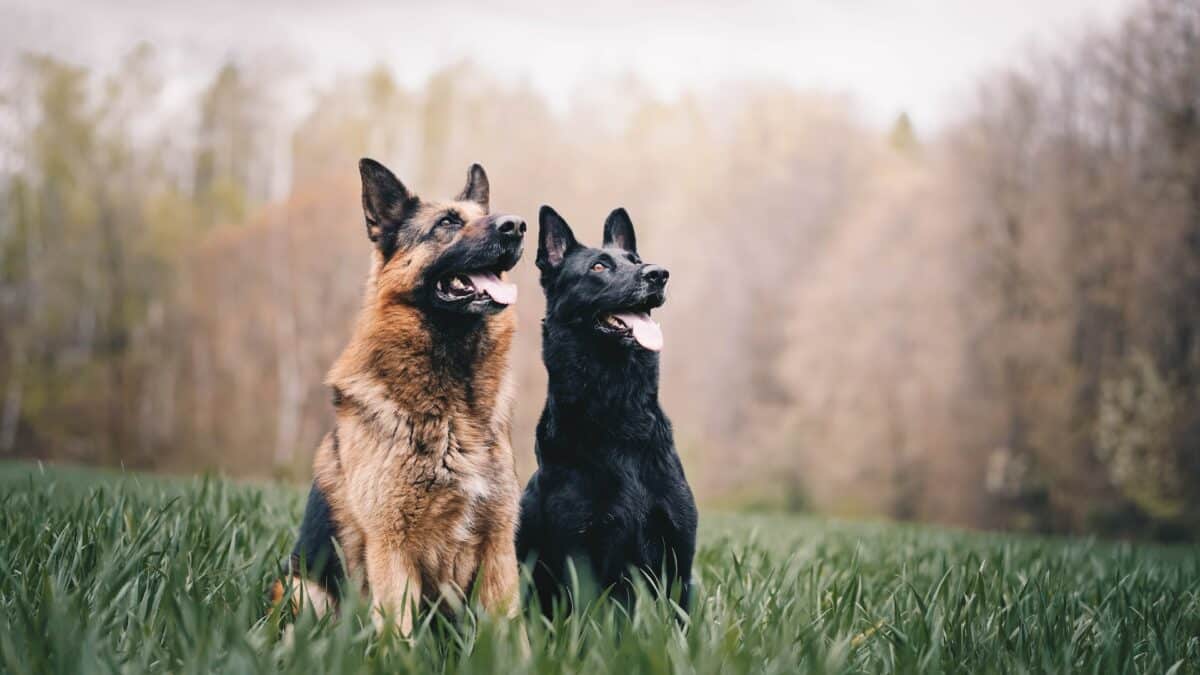
In case of unfortunate events, if bitten by a scary dog, it is important to remain calm and assess the situation before taking further action.
- Firstly, move away from the dog as quickly and safely as possible.
- Next, clean the wound with soap and warm water for at least 5 minutes and, if possible, apply an antibiotic cream or ointment afterward. If there is bleeding, put pressure on the wound using a clean cloth or bandage until it stops.
- Seek medical advice through your doctor or local hospital as soon as possible – they may need to give you a tetanus shot depending on the severity of the bite wound.
Training a Scary Dog For Protection
Training a scary dog for protection isn’t necessarily more complicated than training any other breed. It does, however, require consistency and patience. You will also need to be aware of your dog’s body language, so you can intervene if needed.
Start with basic obedience commands like sit, stay, and come. Keep the sessions short and positive, using treats or rewards if your dog responds correctly.
Slowly and gradually, move on to specific protection commands like “guard” or “watch.” These commands should be given only when your dog is calm and focused; otherwise, they will work less effectively.
Training a scary dog doesn’t mean encouraging aggressive behaviors like growling or barking at strangers. Instead, it teaches them to look for danger signs and react accordingly without being overly aggressive.
By gently introducing the concept of protection during the training session and rewarding them for their good behavior regularly, you can achieve great results in no time at all.
The Importance of Trust and Bonding

When it comes to any guard dog, trust and bonding are incredibly important. You need a dog to be comfortable around you and your family for them to act as a protector. With this in mind, it’s important to take time and establish a trusting relationship before you trust the animal around your family or visitors.
Get them used to being comfortable around people and other animals. The more confident they become around these things, the less they will feel the need to act aggressively toward them.
Additionally, it’s important not to overwhelm them with too many people or unfamiliar items at once, as this can trigger their protective instincts and cause undue stress.
Key Points

| A scary dog can threaten your safety, especially when you may not know what breed it is or its aggression level. |
| A scary dog can vary depending on several factors, including size, breed, and temperament. Larger-sized dogs tend to be perceived as scary more quickly due to their imposing size and strength. |
| Many of these breeds have been bred to develop more protective traits and characteristics that make them more suited as guardians of homes and people. |
| They often have a powerful, muscular physique with a broad chest, thick neck, and square muzzle. Their coats may be shorter than other breeds, with sharp colors like black, brown, or white for contrast. |
| Approaching or dealing with a scary dog can be an intimidating experience. The most important thing is to remain calm and avoid making direct or prolonged eye contact, as this may appear aggressive to the animal. |
Conclusion
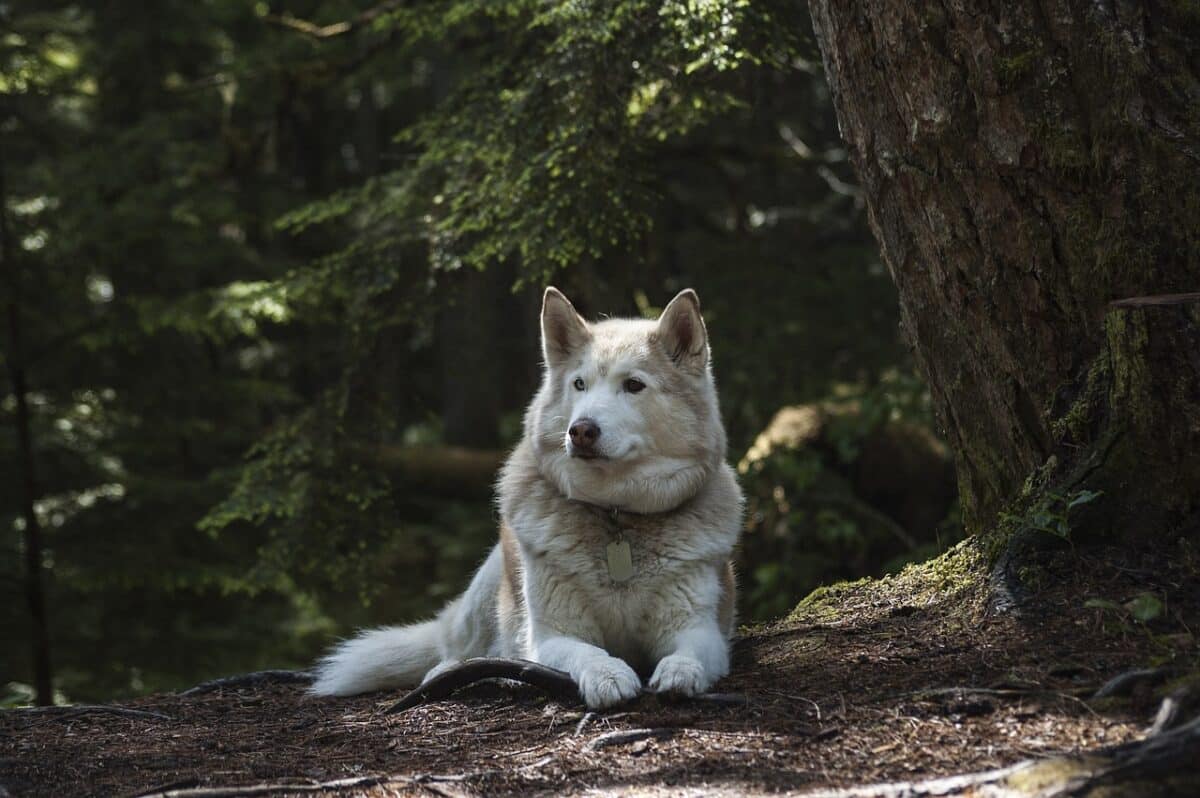
So, to recap, these are five of some of the most scary dog breeds in the world; pit bulls, rottweilers, german shepherds, doberman pinschers, chow chows, and siberian huskies. While they may make great guard dogs, they could also scare you if you’re not used to them. Keep an eye out for these dogs; if you see one that seems hostile, stay alert. Whenever you’re in a situation that feels threatening, back away slowly without making direct eye contact with the dog in question.
If you’re thinking of owning one of these dogs, it’s important to be aware of their personality and tendencies so that you can provide them with the right training and socialization. With the right preparation, you and your family can enjoy the benefits of owning a dog that demands respect
Thank you for reading this article! If you enjoyed reading this you will definitely also like our article on the Top 10 Ugly Dogs.
Join our Forum for free today!



